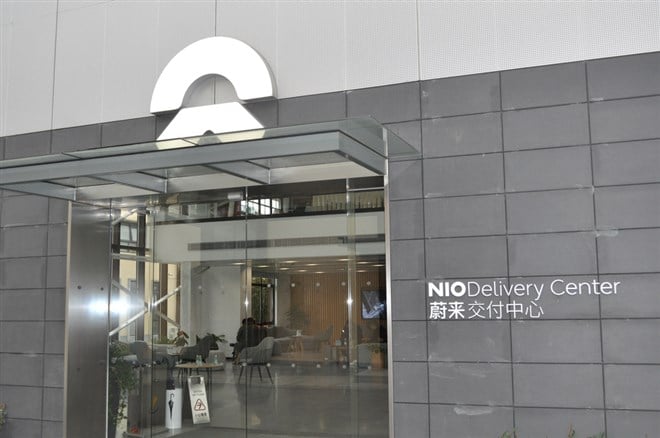
China-based electric vehicle maker NIO (NYSE: NIO) powered more than 19% higher Wednesday. Shares were trading at $12.51 with an hour left in the session.
NIO, along with other Chinese EV manufacturers, rose in tandem with XPeng (NYSE: XPEV), which reported a third-quarter loss of $0.36, meeting views. Revenue $959.2 million came in below analysts’ expectations.
As always, investors look to the future, and there’s now optimism about these companies’ ability to increase production and introduce new models. XPeng’s forecast for deliveries in the current quarter was better than expected.
In addition, the Chinese government may be softening its stance on Covid lockdowns amid protests. That could bode well for increased factory production.
A government official said this week that the nation has “been studying and adjusting our pandemic containment measures to protect the people’s interest to the largest extent and limit the impact on people as much as possible.”
Although markets rose Wednesday primarily on news that the U.S. Federal Reserve may soon begin slowing interest rate hikes, the China-specific news was likely a factor in the uptick in stocks hailing from that nation.
Fellow Chinese EV makers Li Auto (NASDAQ: LI) and BYD (OTCMKTS: BYDDF) also notched strong price gains Wednesday.
These pieces of potentially good news occurred as the broader market surged in the first day of upside trade since November 23.
Revenue Growth Slowing
NIO, which went public in 2018, is not yet profitable. The company’s three-year revenue growth rate is a very healthy 103%, but that strong number masks a problem: The pace of growth has been declining sharply.
In late 2020 and in the first three quarters of 2021, NIO was growing revenue at triple-digit rates. In the quarter that ended in March 2021, revenue grew by an almost astounding 529%.
However, growth rates in the past four quarters ranged from 53% to 20% most recently. That’s still very good, but well below the torrid levels in 2020 and 2021.
NIO is not the only China-based EV maker that’s seen revenue growth slow dramatically. XPeng posted triple-digit sales increases in 2020 and throughout 2021. In the past four quarters, growth decelerated from 208% to 8% most recently.
NIO acknowledged the slowdowns in its most recent earnings report. The loss in the most recent quarter was $0.30 per share, the largest in the past two years, and equal to the loss for the entire year of 2021.
For the full year, analysts expect NIO to lose $0.89 per share. For next year, Wall Street sees a loss of $0.56 per share.
There have clearly been problems brewing for several quarters, ahead of the latest round of Covid lockdowns in China. But while the rest of the world has found ways to essentially live with Covid, China retains more strict policies that have potential to slow production at factories on a moment’s notice.
That’s where concerns about NIO’s future value become relevant.
Increased Spending On R&D, Sales
In its most recent report, NIO said it had boosted research and development spending and was looking to add new products to the pipeline. The company also said selling, general and administrative spending was up, mostly due to building out the sales team.
Both of those increased line items point to expansion plans, which could be impacted if fewer cars are rolling off assembly lines.
Meanwhile, rival Chinese EV maker BYD has been actively expanding into foreign markets.
BYD has been profitable in recent years, with the exception of 2020. However, unlike startups created to produce EVs, BYD is an established firm that makes buses, trucks, bicycles, forklifts, batteries, and other cars.
NIO, on the other hand, has some glamor appeal as a company formed to produce EVs and related products, such as battery-charging stations. NIO has maintained its position as a luxury brand, which may help its revenue as the more mainstream brands cut prices.
Despite a year-to-date decline of 66.86%, NIO still qualifies as a large cap, with a market cap north of $20 billion. If the company can show that it has the potential to increase deliveries at a pace that satisfies investors, the November rally may have some staying power.